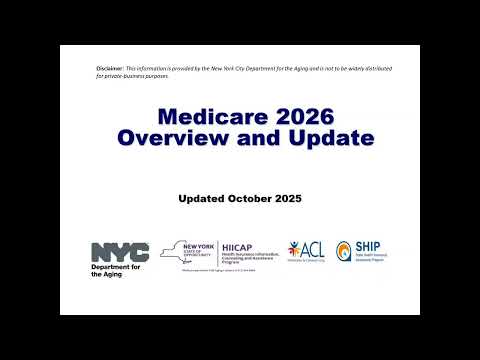
Testimony Before the Department of Public Service Regarding a Renewable Portfolio Standard on June 14th, 2004
Liz Krueger
July 12, 2010
Good morning. My name is Liz Krueger and I am the State Senator for New York’s twenty-sixth senatorial district, one primarily comprising parts of Manhattan’s Midtown and East Side. I appreciate the opportunity to testify at this public forum on renewable energy standards.
New York State is compelled to be ever more vigilant in protecting both our natural resources and the reliability of our electricity system. Current national trends have increased the environmental and transmission threats we must address, as both the federal government and other states have relaxed pollution and reliability standards. Unfortunately, geography and the physical laws of alternating current have left New York too dependent on the actions of government’s outside our borders. Even though New York has energetically sought to combat the ill effects created by others—while simultaneously implementing some of the nation’s most stringent environmental and energy standards—the results of external weakening of protections are evident and worrisome: our lakes are acidic; our air is contaminated; our energy supply is tenuous; our transmission system is fragile.
One reason that New York is now confronted by large-scale problems that have accumulated in number and increased in severity over time is that state policies, though forceful and innovative, have often been reactive, not proactive. Fortunately, the proposed adoption of a Renewable Portfolio Standard presents the state with an opportunity to address alarming environmental deterioration and dangerous energy uncertainty. A Renewable Portfolio Standard also affords New York the opportunity to abandon the reactive, myopic operational modality of policy implementation that has left us on the precipice of an uncertain future and to instead embrace a proactive, cohesive planning process that will enable the state to avoid such an ominous plunge.
The proposed Renewable Portfolio Standard (RPS), currently under consideration and recently ruled upon by Administrative Law Judge Eleanor Stein, would mandate that New York State increase its active retail supply of electricity generated from renewable sources to twenty-five percent by 2013. This is an important ruling. Meeting this target will be a win/win for the people of our State.
While New York is already among the United States’ leaders in renewable energy usage, it still relies heavily upon fossil fuels that are known to pollute the environment and demonstrably impair public health. Fossil fuels, even the cleaner-burning natural gas, release global-warming contributing carbon dioxide, acid-rain producing sulfur dioxide, and smog-causing nitrogen oxides, all of which have significantly harmed New York’s natural resources. These fuel sources, by definition, are also finite in supply and, subsequently, volatile in price and availability. For too long, New York—and in a larger sense, the United States—has depended upon these dirty and harmful energy sources to an embarrassing and detrimental extent.
In fact, recent proposals—misguided decisions owing to willful neglect in the past of the looming energy crisis—to drill for fossil fuels in Alaska and construct expensive and vulnerable gas pipelines across great distances seem desperate when one considers the benefits that renewable energy sources will offer our environment’s health and our energy system’s reliability and markets, to say nothing of the greater social, health, and economic impacts.
New York State studies have estimated that implementing the RPS will reduce natural-gas and oil-powered generation by nine percent and lead to a 5.22-percent reduction in nitrogen oxides emissions, a 6.04-percent reduction in sulfur dioxide emissions, and a 7.43-percent reduction in carbon dioxide emissions. These decreases in air pollution will preserve the health of New York’s environment and diminish exposure to the unhealthy air that has recently contributed to a higher preponderance of respiratory ailments among New York’s population.
Adopting an RPS will also begin to ameliorate outstanding energy-market volatility that has arisen, partially, because though renewables are capable of replenishment and abundant within our own borders, the fossil fuels on which New York currently depends are limited in quantity, foreign in origin, and erratic in availability. As this state continues to grapple with the often difficult process of energy industry deregulation, legislators and policy makers must employ all the tools at our disposal—like a Renewable Portfolio Standard—to protect the wholesale and retail markets, making them competitive for participants and encouraging for investors.
Economic benefits reaped from adopting an RPS will reverberate in more places than just the market. Contrary to fears that a mandatory introduction of new, and accordingly expensive, power-producing technologies will inflate the procurement costs for utilities and subsequent end-user costs for residential electricity customers, the state forecasts that some electricity customers will see a 1.74-percent reduction in their monthly bills. Meanwhile, those customers who do experience an increase in electricity prices will pay an average of 1.58 percent more each month. In more tangible terms, were this latter group of customers already paying monthly $50 utility bills, they would each owe roughly 75 cents more per month. When considered so starkly, the question of whether implementing an RPS is worth the cost seems almost rhetorical given what should be an apparent answer. And were these economic details not persuasive enough, skeptics should consider that markets and human ingenuity have repeatedly taught us that the best way to drive down the costs of new technology is to deploy it sooner rather than later. Renewable energy prices will fall over time as new electricity generation methods proliferate.
As I stated earlier, New York is in dire need of a cohesive and comprehensive energy system schematic. The blackout that paralyzed New York and much of the Northeast last August was a harrowing reminder that our current energy transmission system is fragile and in need of fortification. The New York Independent System Operator has performed admirably, consistently advocating that reliability remain the paramount consideration when developing and implementing energy policies. I would like to reiterate this point, because it cannot be overstated: the reliability of our electric supply is of the utmost importance.
I hope that the discussion and adoption of the RPS will make salient New York’s need for a comprehensive energy plan that allows for growth and market functionality while prioritizing reliability. The long-term planning process should be an inclusive and exhaustive effort that examines all means of improvement—perhaps, for instance, partially insulating New York from the lax reliability standards in connected states by installing direct-current ties at key grid access points. A large-scale electricity plan should galvanize all those who participate in the generation and transmission system, defining a New York electricity environment in which cleaner fuels, newer technologies, better markets, and greater reliability allow for growth and competition.
Adopting the proposed Renewable Portfolio Standard is one preliminary measure that will help initiate this planning and strengthen reliability. Earlier, I noted the detrimental impact fossil-fuel reliance has made on wholesale energy markets. Depending on these fuel supplies also imperils New York’s electricity reliability, subjecting our power supply to their unpredictable availability and startling price inflation. Continued fossil-fuel reliance portends of many problems in the future. However, the RPS can allay many of these concerns, contributing to the fortification of our energy supply and transmission system by diversifying the state’s energy portfolio and mitigating the impacts of dirty-fuel volatility. Fossil fuels also carry with them higher security costs given their potential chemical instability, a point well documented by the National Conference of State Legislatures. As renewables become a larger portion of the state’s energy portfolio, New York and its energy industry will enjoy fewer fuel-supply security costs and increased assurance that the electricity required by every node in the system will be available.
New York must adopt an RPS as soon as it can so that our state can become cleaner, healthier, safer, and stronger. A Renewable Portfolio Standard will protect the environment, promote better health, and make our electricity transmission system more reliable. These changes will require immediate, significant capital investment. However, New York cannot afford to wait for the energy industry to decide when it wants to begin the twenty-first century. The up-front costs might be high, but the back-end savings will be greater: energy prices will come down; secondary and tertiary costs of irresponsible electricity generation—like pollution and the healthcare needed for respiratory afflictions—will decline; and our transmission system will become safer and more reliable. Thank you very much for the opportunity to speak today.
Share this Article or Press Release
Newsroom
Go to Newsroom


